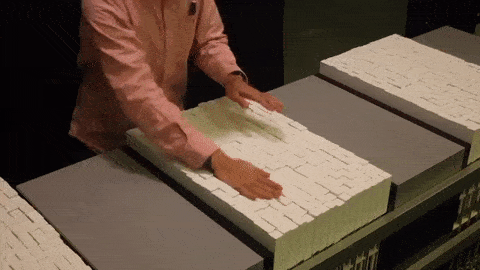Ever wondered if you can make ripples on jello but can’t get enough of the stuff to test it out? Maybe you want to study how waves behave but hate getting wet, or you’re a material scientists that just wants a bit more realism from his simulation software. Luckily for you, MIT seems to have the same problems and the new interface they designed can help you out with all of those applications, and more.
Materiable is a novel shape changing interface designed to not only offer shapes that let you physically manipulate data, but also recreate the material properties of any substance. The interface has a deceptively simple, Minecrafy look, being made up of colorless blocks that you can push down on. But it’s an incredibly versatile tool, as Materiable is able to replicate anything you can mathematically describe to the software: from water, honey or jelly to sponge or rubber. Colored light is projected onto these blocks in simulations, making the simple blocks seemingly come to life as they move.
Active learning is a lot more efficient than a one-sided lecture, and Materiable has a lot of potential in this field. The way it was designed means that the interface lends itself really well to translating mathematical models into physical shapes. It offers a very intuitive method of changing these models by alter the shapes in front of you. With the right software, it could allow you to directly alter the spectral content of audio, revolutionizing the way we make music.
But I think Materiable is going to catch on no matter how we employ it for a very simple reason: It’s wickedly cool.










